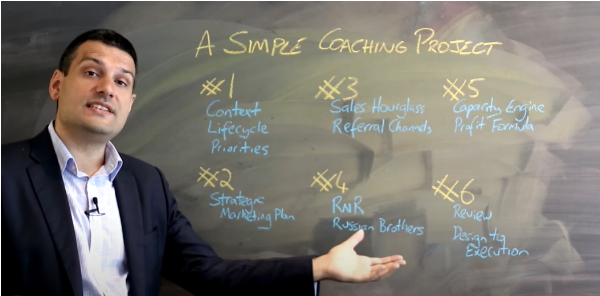Top 3 Priorities for an Exit Ready Business. In Blackboard Fridays Episode 61, Jacob talks about Business Lifecycle. Need this implemented into your business? Talk to the international business advisor who can do exactly that – Contact Jacob, Learn More, or Subscribe for Updates.
Businesses sell for any number of reasons – out of despair, desperation, necessity … and every now and then, because you’ve built a bloody good businesses and it’s time to turn that success into cash so someone else can drive it to the next phase.
Now, in the business lifecycle the Sell Up phase doesn’t mean you HAVE to sell. If you’re youthful and excited, this is the phase where you are best place to escalate your vision and take your company to a whole new level (repeating the lifecycle as a result).
It’s also one of the two best points in the journey to turn that success into a sale. How do you know if you’re ready? What do you do if you are? These are some of the topics covered in this week’s episode as we talk about the Top 3 Priorities for a business in Sell Up.
Who is Jacob Aldridge, Business Coach?
“The smart and quirky advisor who gets sh!t done in business.”
Since April 2006, I’ve been an international business advisor providing bespoke solutions for privately-owned businesses with 12-96 employees.
At this stage you have proven your business model, but you’re struggling to turn aspirations into day-to-day reality. You are still responsible for all 28 areas of your business, but you don’t have the time or budget to hire 28 different experts.
You need 1 person you can trust who can show you how everything in your business is connected, and which areas to prioritise first.
That’s me.
Learn more here. Or Let’s chat.
Transcript
Welcome to the fourth and final in this Blackboard Fridays series, diving deeper on the business lifecycle to give you a competitive advantage. (See also Start Up, Scale Up, and Step Up phases.)
Now if you think it’s been exhausting watching this series of videos, how would you feel living that business lifecycle over 25 years or more?
Indeed, very few businesses are actually successful enough to make it all the way to the Sell Up phase. We’ve talked before about how half of all businesses that start fail at the speed bump between Start Up and Scale Up.
The three most common points for businesses to fall over are the Speed Bump, Hurdle, and Brick Wall in between Start Up, Scale Up, and the Step Up phases.
Research from Dent Global demonstrated that only 6% of businesses actually make it as far as the Sell Up phase in their business lifecycle. So, if that’s you congratulations and well done.
When is the Best Time to Sell a Business?
Now, if you’re watching this video because you’re thinking about selling, then understand there are two great points in the business lifecycle to sell a business.
The first is back in Scale Up. As you approach that euphoric pinnacle of achieving your initial vision, that’s a great time to sell the business for the next person who can come in with their vision and take it to new heights.
The second great place to sell your business is the focus today, at the end of this diagram in the black Sell Up phase.

In this phase – where Selling always remains optional – you will have created a business which is not dependent on you. Having made the necessary changes when the business demanded you Step Up, you have built a business which has both a life of its own but also controlled growth and planning.
So this is clearly another great point to sell a business, to realize the value for those decades of work, because a business that is not dependent on you is worth a lot, lot more.
Where do most businesses sell?
Alas, most businesses don’t sell in Scale Up or Sell Up.
Some are able to exit the Start Up journey with a nominal form of sale, perhaps an “aquihire” at best, or a liquidation of some assets that are worth something.
The most common ‘eject’ point is in the Step Up phase, in that brick wall feeling stuck, selling out of despair and desperation. This is absolutely where I don’t want you to sell your business.
So if you’re stuck in that brick wall and thinking of getting out, come and have a conversation with my team about how we can implement those Step Up priorities to move you into the Sell Up phase where you’re actually going to realize maximum value for your business.
The Emotions in Sell Up Phase
The Sell Up phase begins with optimism, having implemented your Business by Design changes you and your team are now connected to a renewed vision, with a renewed vigor for where you’re going to take your operations. And that creates hope, hope for you, hope for your team, and as your team execute on those hopeful and optimistic plans your hope turns into pride.
As you implement the last of the changes that get you out of that brick wall, you feel justifiably proud of everything that you’ve created. You are now in a very very small minority of businesses who have managed to make it this far.
We talk a lot in this Business Lifecycle video series about time – moving forward, but at our own pace. There are a few points in the lifecycle where you want to walk slowly, enjoy the journey a little more if you can. The ‘relaxed’ phase of Scale Up is one, and commonly lasts for 7-10 years in an organisation which continues to reinvest in its growth.
The ‘pride’ time of Sell Up is another. You could, at this point, sell your business for more than at any prior point … but often in SMEs it’s more fun and more profitable to stay present and enjoy the journey for another few years.
The final feeling is the Sell Up phase is fulfilment, though (WARNING WARNING) its “fulfilment for now”, for you have a choice coming up. Sell Up? Leverage? Go Around Again?
The 3 Priorities of a Sell Up Business
Just because I call it “Sell Up” doesn’t mean that your decision has to be to sell the whole business or even sell part of the business. While a common choice, the decision to sell often reflects the average 20+ years it takes for a business to reach this phase – when the average medium-sized business owner founded their company in their 40s, adding 20 years takes them to a point in life where reward for their achievements is more motivating than playing the game again.
1. What’s Your Number?
When you learn that your business is here, the first priority is asking yourself (and your family) “What’s Our Number?”
If I was going to walk into your business today, and offer to buy it from you, what would I have to offer for you to accept? Take some time watch one of our very first Blackboard Fridays episodes about the wealth quadrant for business owners and you may discover that your number is actually lower than you think it is.
You have an opportunity to create financial independence and move into that freedom quadrant right now. Understanding your number also helps you plan for the business growth ahead of you, if you realise your business value isn’t quite there yet. How can you get to that point where you can sell the business for what you need?
2. Get Succession Ready
Ensure that your business is Succession Ready. There are many ways to succeed yourself out of a business.
So whether that’s family succession, a partial sale, a management buyout, a full sale, full exit whatever it is that you feel is that succession plan for you … is your business ready for you to step back or step out of the business?
There’s a lot of different elements that you need to look at, and the most overlooked aspect is not so much making the business succession ready … it’s ensuring YOU are succession ready on a personal level.
If you are stepping out of the business, are you excited to be stepping into something else? Or is succession merely an intellectual pursuit. I’ve met many business owners where the behaviour tells the truth – they say they want to sell, to leave, to retire, but they behave as if they don’t.
A shout out to the brilliant brains at Bean Partners in London for recently teaching me the phrase “A rolling 5 year retirement plan”.
It’s OK to not want to sell. Just make that choice and communicate it.
3. Leverage or Legacy?
The third and final strategic priority for a business in the Sell Up phase is answering that choice question: Leverage or Legacy?
Am I going to sell this business, to exit this business, to leave a legacy for my industry? Or am I brave enough to go around again? Are you excited to say “You know what, I’ve created a new vision. I’ve created new opportunity, I’ve shaken off the last of that brick wall and I’m ready to leverage the heck out of this opportunity.”
“Fulfilment…gone in the rearview mirror. I want new challenges, new choices, and I’m so motivated by that that I’m willing to take my business through the lifecycle once again but at a much higher level to create the next great opportunity for me and my life.”
If that’s you, fantastic. Congratulations on having made it through the business lifecycle that 94% of businesses don’t make it through and best of luck for tackling it again with all of that new enthusiasm and the expertise that you’ve built going through it once to help create the opportunity and give you the success to do it all again.
I look forward to hearing your story at some point in the future. For everyone else, there are your priorities good luck and thank you for enjoying the Business Lifecycle series.
Next Steps
Want to learn more about how this can apply to your business? It costs nothing to chat:
- Email me jacob@jacobaldridge.com (I read them all)
- Call, Text, or WhatsApp me +61 427 151 181
- Or just Subscribe https://jacobaldridge.com/about/subscribe-to-jacob-aldridge-com/ to stay in touch





[…] Episode 61, Top 3 Priorities for an Exit Ready Business – https://jacobaldridge.com/business/top-3-priorities-for-an-exit-ready-business/ […]
[…] (Side note, if you want more details on exactly where your business is on its Lifecycle, enjoy watching Episodes 1 and 2 here. And if you want to learn more about the emotional rollercoaster and strategic priorities at each stage, click the links to learn about Start-Up, Scale- Up, Step-Up, and Sell-Up.) […]